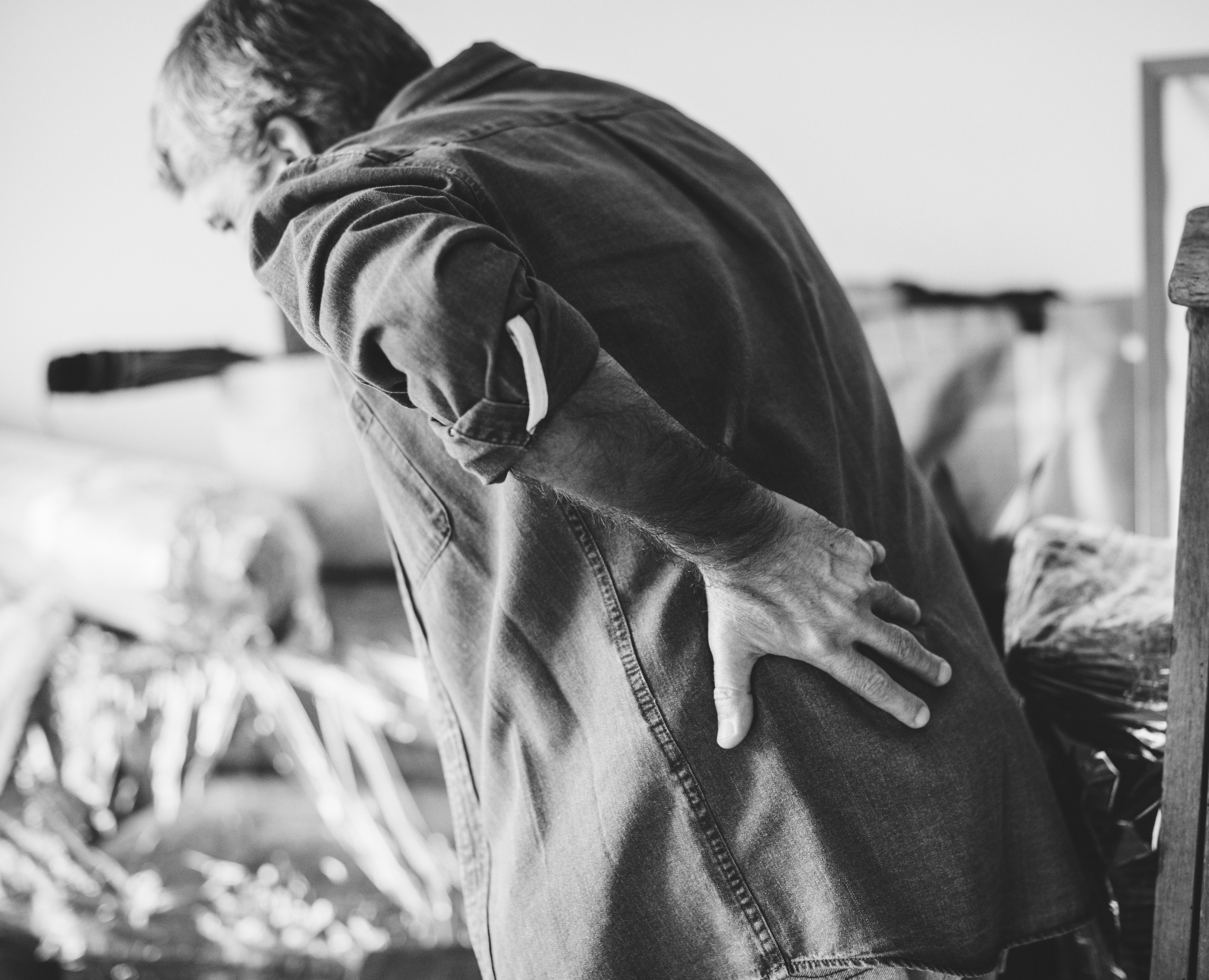Back pain is a very common problem covering a range of conditions linked to the joints, bones, muscles and nerves in the back, as well as connective tissue. Around 16% of the Australian population suffer from back problems (Source: Australian Bureau of Statistics 2014-15 National Health Survey). This is a lot of down time for industry, as well as having an impact on the individual and their family and puts pressure on the health care sector aiming to support and treat them.
Fortunately, there are some simple self-help lifestyle tips that sufferers of back pain can adopt to help manage their condition. Before looking at these, let’s start by identifying what constitutes back problems and causes and treatment.
Identifying Back Problems
Back problems can affect the neck, the upper and lower spine and the tail bone or coccyx. Pain can be caused by injuries to the back, such as being in a fall or car accident, or by a range of conditions such as osteoarthritis. Back problems also can occur as we age, and the spine starts to degenerate, or due just to general wear and tear.
The spine is made up of bony vertebrae that are cushioned from rubbing on each other by discs. Over time, and due to lack of hydration, the discs can become worn out and start to degenerate or may become trapped or move (a “slipped disc”), which is extremely painful. Disc degeneration can also lead to stiffness in the neck along with some pain. Other back problems can occur due to pressure on part of the spinal nerve that is attached to the spinal cord.
Pain can also occur due to the narrowing in area of the spine through which the spinal cord passes through. Sometimes tingling or numbness is felt, which starts in the lower back spreading down to the legs, and all these back problems have many different causes.
It is very important to consult a chiropractor who will be able to assess the problem and through orthopaedic, neurological and postural screening, can pinpoint and help treat the root cause of the pain. Chiropractic care, consisting of a holistic programme of treatment can be planned to help manage the pain, which also includes assessing the lifestyle and diet of the person suffering. Gentle manipulation and exercises to treat the root cause is the start of this process but self-management is also a key part – so what can we do to help ourselves manage back pain?
Change Those Ingrained Habits
Sitting has been likened to the new smoking, as our bodies are not designed to sit in one place for hours hunched over a computer, driving a car or watching a media screen. Key advice is not to sit still for more than 45 minutes because around that time the brain recognises that this is a position to hold. Muscles become locked, shoulders may be raised or hunched, and the body is not properly aligned. Getting up and moving around before this happens will break this cycle. Make sure that in the same way that we give our eyes a rest from the screen, the body gets chance to get up, move around and take a drink of water.
Keep Hydrated
Drink eight glasses of water a day or sugar free drinks/flavoured water if plain water is not that palatable. As noted above, there are several discs that cushion the vertebrae and when we are born, these discs are made up of 80% water. As we age, this ratio starts to drop so, keeping the body hydrated maintains a healthy spine and if recovering from pain due to disc problems, we need to keep these discs from degenerating further.
Adapt The Proper Sleeping Position
The best position for spinal alignment is sleeping on the back, however, if traditionally your sleeping position is on the front, then try to alter this. If you find it very hard, at least start by sleeping on your back with a pillow under the knees and arms by your side or relaxed across the stomach.
Adjust The Workspace
Ensure that an ergonomic workstation and proper office chair is used, employees can ask for a workstation assessment to help with this but ensure the home study is properly set out and equipped. There are adaptions that can be bought relatively cheaply to allow you to stand at the desk from time to time as well. Look at raising the monitor to ensure the line of sight is straight in front and not down at an angle. The angle of the arms and legs should be at 90 degrees and adjustable foot rests can help as well.
Take Gentle Exercise
After exercise, we feel good due to the release of endorphins and this is a natural form of pain relief. Your chiropractor will discuss the best form of exercise to undertake to promote good health and pain management that can be undertaken safely. Ensure before making any changes to your lifestyle habits that you have spoken to the chiropractor. Carrying these small but important changes will truly make a difference. Book an appointment today.



